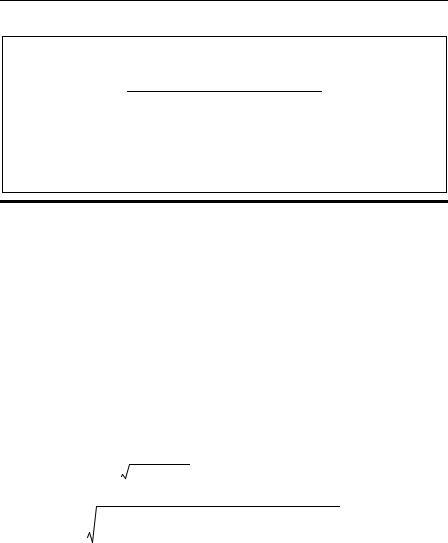
Handbook_of_statistical_analysis_using_SAS
.pdf
region are associated. Here, the chi-square test is unsuitable because of the very sparse nature of the data.
The FREQ Procedure
|
Table of site by region |
|
|
|
|
|
|||||||
site |
|
|
|
|
region |
|
|
|
|
|
|
|
|
Frequency |
|
|
|
|
|
|
|
|
|
|
|
|
|
|
|
|
|
|
|
|
|
|
|
|
|
|
|
Percent |
|
|
|
|
|
|
|
|
|
|
|
|
|
Row Pct |
|
|
|
|
|
|
|
|
|
|
|
|
|
Col Pct |
|
Keral |
|
Gujarat |
|
Anhara |
|
|
Total |
||||
|
|
|
|
||||||||||
|
|
|
|
|
|
|
|
|
|
|
|
|
|
Buccal Mucosa |
|
|
8 |
|
|
1 |
|
|
8 |
|
|
|
17 |
|
|
29 |
.63 |
|
3 |
.70 |
|
29 |
.63 |
|
|
62 |
.96 |
|
|
47 |
.06 |
|
5 |
.88 |
|
47 |
.06 |
|
|
|
|
|
|
80 |
.00 |
|
14 |
.29 |
|
80 |
.00 |
|
|
|
|
|
|
|
|
|
|
|
|
|
|
|
|
|
|
Labial Mucosa |
|
|
0 |
|
|
1 |
|
|
0 |
|
|
|
1 |
|
|
0 |
.00 |
|
3 |
.70 |
|
0 |
.00 |
|
|
3 |
.70 |
|
|
0 |
.00 |
|
100 |
.00 |
|
0 |
.00 |
|
|
|
|
|
|
0 |
.00 |
|
14 |
.29 |
|
0 |
.00 |
|
|
|
|
|
|
|
|
|
|
|
|
|
|
|
|
|
|
Commissure |
|
|
0 |
|
|
1 |
|
|
0 |
|
|
|
1 |
|
|
0 |
.00 |
|
3 |
.70 |
|
0 |
.00 |
|
|
3 |
.70 |
|
|
0 |
.00 |
|
100 |
.00 |
|
0 |
.00 |
|
|
|
|
|
|
0 |
.00 |
|
14 |
.29 |
|
0 |
.00 |
|
|
|
|
|
|
|
|
|
|
|
|
|
|
|
|
|
|
Gingiva |
|
|
0 |
|
|
1 |
|
|
0 |
|
|
|
1 |
|
|
0 |
.00 |
|
3 |
.70 |
|
0 |
.00 |
|
|
3 |
.70 |
|
|
0 |
.00 |
|
100 |
.00 |
|
0 |
.00 |
|
|
|
|
|
|
0 |
.00 |
|
14 |
.29 |
|
0 |
.00 |
|
|
|
|
|
|
|
|
|
|
|
|
|
|
|
|
|
|
Hard palate |
|
|
0 |
|
|
1 |
|
|
0 |
|
|
|
1 |
|
|
0 |
.00 |
|
3 |
.70 |
|
0 |
.00 |
|
|
3 |
.70 |
|
|
0 |
.00 |
|
100 |
.00 |
|
0 |
.00 |
|
|
|
|
|
|
0 |
.00 |
|
14 |
.29 |
|
0 |
.00 |
|
|
|
|
|
|
|
|
|
|
|
|
|
|
|
|
|
|
Soft palate |
|
|
0 |
|
|
1 |
|
|
0 |
|
|
|
1 |
|
|
0 |
.00 |
|
3 |
.70 |
|
0 |
.00 |
|
|
3 |
.70 |
|
|
0 |
.00 |
|
100 |
.00 |
|
0 |
.00 |
|
|
|
|
|
|
0 |
.00 |
|
14 |
.29 |
|
0 |
.00 |
|
|
|
|
|
|
|
|
|
|
|
|
|
|
|
|
|
|
Tongue |
|
|
0 |
|
|
1 |
|
|
0 |
|
|
|
1 |
|
|
0 |
.00 |
|
3 |
.70 |
|
0 |
.00 |
|
|
3 |
.70 |
|
|
0 |
.00 |
|
100 |
.00 |
|
0 |
.00 |
|
|
|
|
|
|
0 |
.00 |
|
14 |
.29 |
|
0 |
.00 |
|
|
|
|
|
|
|
|
|
|
|
|
|
|
|
|
|
|
©2002 CRC Press LLC

Floor of mouth |
|
1 |
|
0 |
|
1 |
|
2 |
|
3 |
.70 |
0 |
.00 |
3 |
.70 |
7 |
.41 |
|
50 |
.00 |
0 |
.00 |
50 |
.00 |
|
|
|
10 |
.00 |
0 |
.00 |
10 |
.00 |
|
|
|
|
|
|
|
|
|
|
|
Alveolar ridge |
|
1 |
|
0 |
|
1 |
|
2 |
|
3 |
.70 |
0 |
.00 |
3 |
.70 |
7 |
.41 |
|
50 |
.00 |
0 |
.00 |
50 |
.00 |
|
|
|
10 |
.00 |
0 |
.00 |
10 |
.00 |
|
|
|
|
|
|
|
|
|
|
|
Total |
10 |
|
7 |
|
10 |
|
27 |
|
37 |
.04 |
25 |
.93 |
37 |
.04 |
100 |
.00 |
|
Statistics for Table of site by region |
|
|||
Statistic |
DF |
|
Value |
Prob |
|
|
|
|
|
Chi-Square |
16 |
22 |
.0992 |
0.1400 |
Likelihood Ratio Chi-Square |
16 |
23 |
.2967 |
0.1060 |
Mantel-Haenszel Chi-Square |
1 |
0 |
.0000 |
1.0000 |
Phi Coefficient |
|
0 |
.9047 |
|
Contingency Coefficient |
|
0 |
.6709 |
|
Cramer's V |
|
|
0.6397 |
|
WARNING: 93% of the cells have expected counts less than 5. Chi-Square may not be a valid test.
The FREQ Procedure
Statistics for Table of site by region
Fisher's Exact Test
Table Probability (P) |
5.334E-06 |
Pr <=P |
0.0101 |
Sample Size = 27
Display 3.12
3.3.7 Particulates and Bronchitis
The final data set to be analysed in this chapter, the bronchitis data in Display 3.6, involves 2 × 2 tables for bronchitis and level of organic particulates for three age groups. The data could be collapsed over age and the aggregate 2 × 2 table analysed as described previously. However, the potential dangers of this procedure are well-documented (see, for
©2002 CRC Press LLC

example, Everitt [1992]). In particular, such pooling of contingency tables can generate an association when in the separate tables there is none. A more appropriate test in this situation is the Mantel-Haenszel test. For a series of k 2 × 2 tables, the test statistic for testing the hypothesis of no association is:
|
|
|
|
∑k |
ai – ∑k ( ai + bi) ( ai + ci) |
|
2 |
|
|
|
|
|
|
||||
X2 = |
|
|
|
i = 1 |
i = 1 |
ni |
|
(3.1) |
--------k |
- |
- |
------------------------------------------ |
-- |
||||
|
|
( ai + bi) ( ci |
+ di) ( ai + ci) ( bi |
+ di) |
||||
|
∑ |
--------------------------------------------------------------------------------- |
||||||
|
|
|
|
|
ni2( ni – 1) |
|
|
|
|
i = 1 |
|
|
|
|
|
|
|
where ai, bi, ci, di represent the counts in the four cells of the ith table and ni is the total number of observations in the ith table. Under the null hypothesis of independence in all tables, this statistic has a chi-squared distribution with a single degree of freedom.
The data can be read in and analysed using the following SAS code:
data bronchitis;
|
input agegrp level $ bronch $ n; |
||
cards; |
|
|
|
1 |
H |
Y |
20 |
1 |
H |
N |
382 |
1 |
L |
Y |
9 |
1 |
L |
N |
214 |
2 |
H |
Y |
10 |
2 |
H |
N |
172 |
2 |
L |
Y |
7 |
2 |
L |
N |
120 |
3 |
H |
Y |
12 |
3 |
H |
N |
327 |
3 |
L |
Y |
6 |
3 |
L |
N |
183 |
;
proc freq data=bronchitis order=data;
Tables agegrp*level*bronch / cmh noprint; weight n;
run;
©2002 CRC Press LLC

The tables statement specifies a three-way tabulation with agegrp
defining the strata. The cmh option requests the Cochran-Mantel-Haenszel statistics and the noprint option suppresses the tables. The results are
shown in Display 3.13. There is no evidence of an association between level of organic particulates and suffering from bronchitis. The P-value associated with the test statistic is 0.64 and the assumed common odds ratio calculated as:
ˆ |
|
Σ ( aidi ⁄ ni) |
|
ψ pooled |
= |
-Σ----(--b----i-c---i---⁄--n----i-)- |
(3.2) |
|
|
|
takes the value 1.13 with a confidence interval of 0.67, 1.93. (Since the Mantel-Haenszel test will only give sensible results if the association between the two variables is both the same size and same direction in each 2 × 2 table, it is generally sensible to look at the results of the Breslow-Day test for homogeneity of odds ratios given in Display 3.13. Here there is no evidence against homogeneity. The Breslow-Day test is described in Agresti [1996]).
The FREQ Procedure
Summary Statistics for level by bronch
Controlling for agegrp
Cochran-Mantel-Haenszel Statistics (Based on Table Scores)
Statistic |
Alternative Hypothesis |
DF |
Value |
Prob |
|
|
|
|
|
1 |
Nonzero Correlation |
1 |
0.2215 |
0.6379 |
2 |
Row Mean Scores Differ |
1 |
0.2215 |
0.6379 |
3 |
General Association |
1 |
0.2215 |
0.6379 |
Estimates of the Common Relative Risk (Row1/Row2) |
|
|||
Type of Study |
Method |
Value |
95% Confidence |
Limits |
|
|
|
|
|
Case-Control |
Mantel-Haenszel |
1.1355 |
0.6693 |
1.9266 |
(Odds Ratio) |
Logit |
1.1341 |
0.6678 |
1.9260 |
Cohort |
Mantel-Haenszel |
1.1291 |
0.6808 |
1.8728 |
(Col1 Risk) |
Logit |
1.1272 |
0.6794 |
1.8704 |
Cohort l |
Mantel-Haenszel |
0.9945 |
0.9725 |
1.0170 |
(Col2 Risk) |
Logit |
0.9945 |
0.9729 |
1.0166 |
©2002 CRC Press LLC

Breslow-Day Test for
Homogeneity of the Odds Ratios
Chi-Square |
0.1173 |
DF |
2 |
Pr > ChiSq |
0.9430 |
Total Sample Size = 1462
Display 3.13
Exercises
3.1For the oral contraceptives data, construct a confidence interval for the difference in the proportion of women suffering blood clots who used oral contraceptives and the corresponding proportion for women not suffering blood clots.
3.2For the piston ring data, the “residuals” used in the text were simply observed frequency minus expected under independence. Those are not satisfactory for a number of reasons, as discussed in Everitt (1992). More suitable residuals are r and radj given by:
r |
= Observed-----------------------------–-----Expected------------------------ |
and |
|
||||
|
|
|
Expected |
|
|
|
|
radj |
= |
|
|
r |
|
|
|
---------- |
---Row--------------total-------------------- |
------- |
--------- |
Column------------------------total-------------- |
|||
|
|
|
|
||||
|
|
1 – |
-------------------------------- |
– |
1 – |
--Sample----------------------size----------- |
|
|
|
|
Sample size |
|
|
|
|
Calculate both for the piston ring data and compare what each of the three types have to say about the data.
3.3In the data given in Display 3.5, the frequencies for the Keral and Andhra regions are identical. Reanalyse the data after simply summing the frequencies for those two regions and reducing the number of columns of the table by one.
©2002 CRC Press LLC

Chapter 4
Multiple Regression:
Determinants of Crime
Rate in the United States
4.1 Description of Data
The data set of interest in this chapter is shown in Display 4.1 and consists of crime rates for 47 states in the United States, along with the values of 13 explanatory variables possibly associated with crime. (The data were originally given in Vandaele [1978] and also appear in Table 134 of SDS.)
A full description of the 14 variables in these data is as follows:
RCrime rate: the number of offences known to the police per 1,000,000 population
Age Age distribution: the number of males aged 14 to 24 years per 1000 of total state population
SBinary variable distinguishing southern states (S = 1) from the rest
Ed |
Educational level: |
mean number of years of schooling × 10 |
|
of the population |
25 years old and over |
Ex0 |
Police expenditure: per capita expenditure on police pro- |
|
|
tection by state and local governments in 1960 |
|
Ex1 |
Police expenditure: as Ex0, but for 1959 |
|
©2002 CRC Press LLC

LF |
Labour force participation rate per 1000 civilian urban males |
|
in the age group 14 to 24 years |
MNumber of males per 1000 females
NState population size in hundred thousands
NW |
Number of non-whites per 1000 |
|||
U1 |
Unemployment rate |
of urban males per 1000 in the age |
||
|
group 14 |
to 24 |
years |
|
U2 |
Unemployment rate |
of urban males per 1000 in the age |
||
|
group 35 |
to 39 |
years |
|
WWealth, as measured by the median value of transferable goods and assets or family income (unit 10 dollars)
XIncome inequality: the number of families per 1000 earning below one half of the median income
The main question of interest about these data concerns how the crime rate depends on the other variables listed. The central method of analysis will be multiple regression.
|
R |
Age |
S |
Ed |
Ex0 |
Ex1 |
LF |
M |
N |
NW |
U1 |
U2 |
W |
X |
|
|
|
|
|
|
|
|
|
|
|
|
|
|
|
|
|
|
79.1 |
151 |
1 |
91 |
58 |
56 |
510 |
950 |
33 |
301 |
108 |
41 |
394 |
261 |
|
|
163.5 |
143 |
0 |
113 |
103 |
95 |
583 |
1012 |
13 |
102 |
96 |
36 |
557 |
194 |
|
|
57.8 |
142 |
1 |
89 |
45 |
44 |
533 |
969 |
18 |
219 |
94 |
33 |
318 |
250 |
|
|
196.9 |
136 |
0 |
121 |
149 |
141 |
577 |
994 |
157 |
80 |
102 |
39 |
673 |
167 |
|
|
123.4 |
141 |
0 |
121 |
109 |
101 |
591 |
985 |
18 |
30 |
91 |
20 |
578 |
174 |
|
|
68.2 |
121 |
0 |
110 |
118 |
115 |
547 |
964 |
25 |
44 |
84 |
29 |
689 |
126 |
|
|
96.3 |
127 |
1 |
111 |
82 |
79 |
519 |
982 |
4 |
139 |
97 |
38 |
620 |
168 |
|
|
155.5 |
131 |
1 |
109 |
115 |
109 |
542 |
969 |
50 |
179 |
79 |
35 |
472 |
206 |
|
|
85.6 |
157 |
1 |
90 |
65 |
62 |
553 |
955 |
39 |
286 |
81 |
28 |
421 |
239 |
|
|
70.5 |
140 |
0 |
118 |
71 |
68 |
632 |
1029 |
7 |
15 |
100 |
24 |
526 |
174 |
|
|
167.4 |
124 |
0 |
105 |
121 |
116 |
580 |
966 |
101 |
106 |
77 |
35 |
657 |
170 |
|
|
84.9 |
134 |
0 |
108 |
75 |
71 |
595 |
972 |
47 |
59 |
83 |
31 |
580 |
172 |
|
|
51.1 |
128 |
0 |
113 |
67 |
60 |
624 |
972 |
28 |
10 |
77 |
25 |
507 |
206 |
|
|
66.4 |
135 |
0 |
117 |
62 |
61 |
595 |
986 |
22 |
46 |
77 |
27 |
529 |
190 |
|
|
79.8 |
152 |
1 |
87 |
57 |
53 |
530 |
986 |
30 |
72 |
92 |
43 |
405 |
264 |
|
|
94.3 |
142 |
1 |
88 |
81 |
77 |
497 |
956 |
33 |
321 |
116 |
47 |
427 |
157 |
|
|
53.9 |
143 |
0 |
110 |
66 |
63 |
537 |
977 |
10 |
6 |
114 |
35 |
487 |
166 |
|
|
92.9 |
135 |
1 |
104 |
123 |
115 |
537 |
978 |
31 |
170 |
89 |
34 |
631 |
165 |
|
|
75.0 |
130 |
0 |
116 |
128 |
128 |
536 |
934 |
51 |
24 |
78 |
34 |
627 |
135 |
|
|
122.5 |
125 |
0 |
108 |
113 |
105 |
567 |
985 |
78 |
94 |
130 |
58 |
626 |
166 |
|
|
74.2 |
126 |
0 |
108 |
74 |
67 |
602 |
984 |
34 |
12 |
102 |
33 |
557 |
195 |
|
|
43.9 |
157 |
1 |
89 |
47 |
44 |
512 |
962 |
22 |
423 |
97 |
34 |
288 |
276 |
|
|
121.6 |
132 |
0 |
96 |
87 |
83 |
564 |
953 |
43 |
92 |
83 |
32 |
513 |
227 |
|
|
|
|
|
|
|
|
|
|
|
|
|
|
|
|
|
©2002 CRC Press LLC

|
|
96.8 |
131 |
0 |
116 |
78 |
73 |
574 |
1038 |
7 |
36 |
142 |
42 |
540 |
179 |
|
|
|
|
52.3 |
130 |
0 |
116 |
63 |
57 |
641 |
984 |
14 |
26 |
70 |
21 |
486 |
196 |
|
|
|
|
199.3 |
131 |
0 |
121 |
160 |
143 |
631 |
1071 |
3 |
77 |
102 |
41 |
674 |
152 |
|
|
|
|
34.2 |
135 |
0 |
109 |
69 |
71 |
540 |
965 |
6 |
4 |
80 |
22 |
564 |
139 |
|
|
|
|
121.6 |
152 |
0 |
112 |
82 |
76 |
571 |
1018 |
10 |
79 |
103 |
28 |
537 |
215 |
|
|
|
|
104.3 |
119 |
0 |
107 |
166 |
157 |
521 |
928 |
168 |
89 |
92 |
36 |
637 |
154 |
|
|
|
|
69.6 |
166 |
1 |
89 |
58 |
54 |
521 |
973 |
46 |
2554 |
72 |
26 |
396 |
237 |
|
|
|
|
37.3 |
140 |
0 |
93 |
55 |
54 |
535 |
1045 |
6 |
20 |
135 |
40 |
453 |
200 |
|
|
|
|
75.4 |
125 |
0 |
109 |
90 |
81 |
586 |
964 |
97 |
82 |
105 |
43 |
617 |
163 |
|
|
|
|
107.2 |
147 |
1 |
104 |
63 |
64 |
560 |
972 |
23 |
95 |
76 |
24 |
462 |
233 |
|
|
|
|
92.3 |
126 |
0 |
118 |
97 |
97 |
542 |
990 |
18 |
21 |
102 |
35 |
589 |
166 |
|
|
|
|
65.3 |
123 |
0 |
102 |
97 |
87 |
526 |
958 |
113 |
76 |
124 |
50 |
572 |
158 |
|
|
|
|
127.2 |
150 |
0 |
100 |
109 |
98 |
531 |
964 |
9 |
24 |
87 |
38 |
559 |
153 |
|
|
|
|
83.1 |
177 |
1 |
87 |
58 |
56 |
638 |
974 |
24 |
349 |
76 |
28 |
382 |
254 |
|
|
|
|
56.6 |
133 |
0 |
104 |
51 |
47 |
599 |
1024 |
7 |
40 |
99 |
27 |
425 |
225 |
|
|
|
|
82.6 |
149 |
1 |
88 |
61 |
54 |
515 |
953 |
36 |
165 |
86 |
35 |
395 |
251 |
|
|
|
|
115.1 |
145 |
1 |
104 |
82 |
74 |
560 |
981 |
96 |
126 |
88 |
31 |
488 |
228 |
|
|
|
|
88.0 |
148 |
0 |
122 |
72 |
66 |
601 |
998 |
9 |
19 |
84 |
20 |
590 |
144 |
|
|
|
|
54.2 |
141 |
0 |
109 |
56 |
54 |
523 |
968 |
4 |
2 |
107 |
37 |
489 |
170 |
|
|
|
|
82.3 |
162 |
1 |
99 |
74 |
70 |
522 |
996 |
40 |
208 |
73 |
27 |
496 |
221 |
|
|
|
|
103.0 |
136 |
0 |
121 |
95 |
96 |
574 |
1012 |
29 |
36 |
111 |
37 |
622 |
162 |
|
|
|
|
45.5 |
139 |
1 |
88 |
46 |
41 |
480 |
9968 |
19 |
49 |
135 |
53 |
457 |
249 |
|
|
|
|
50.8 |
126 |
0 |
104 |
106 |
97 |
599 |
989 |
40 |
24 |
78 |
25 |
593 |
171 |
|
|
|
|
84.9 |
130 |
0 |
121 |
90 |
91 |
623 |
1049 |
3 |
22 |
113 |
40 |
588 |
160 |
|
|
|
|
|
|
|
|
|
|
|
|
|
|
|
|
|
|
|
|
|
|
|
|
|
|
|
|
|
|
|
|
|
|
|
|
|
|
|
|
|
|
|
|
|
|
|
|
|
|
|
|
|
|
|
|
Display 4.1
4.2 The Multiple Regression Model
The multiple regression model has the general form:
yi = β 0 + β 1x1i + β 2x2i + … β pxpi + i |
(4.1) |
where yi is the value of a continuous response variable for observation i, and x1i, x2i, …, xpi are the values of p explanatory variables for the same observation. The term i is the residual or error for individual i and represents the deviation of the observed value of the response for this individual from that expected by the model. The regression coefficients, β 0, β 1, …, β p, are generally estimated by least-squares.
©2002 CRC Press LLC

Significance tests for the regression coefficients can be derived by assuming that the residual terms are normally distributed with zero mean and constant variance σ 2. The estimated regression coefficient corresponding to a particular explanatory variable gives the change in the response variable associated with a unit change in the explanatory variable, conditional on all other explanatory variables remaining constant.
For n observations of the response and explanatory variables, the regression model can be written concisely as:
y = Xββ + |
(4.2) |
where y is the n × 1 vector of responses; X is an n × |
(p + 1) matrix of |
known constraints, the first column containing a series of ones corresponding to the term β 0 in Eq. (4.1); and the remaining columns containing values of the explanatory variables. The elements of the vectorββ are the regression coefficients β 0, β 1, …, β p, and those of the vector , the residual
terms 1, 2, …, n.
The regression coefficients can be estimated by least-squares, resulting
in the following estimator for ββ : |
|
ββˆ = (X′X)–1 X′y |
(4.3) |
The variances and covariances of the resulting estimates can be found from
Sˆ = s2(X′X)–1 |
(4.4) |
ββ |
|
where s2 is defined below.
The variation in the response variable can be partitioned into a part due to regression on the explanatory variables and a residual. These can be arranged in an analysis of variance table as follows:
Source |
DF |
SS |
MS |
F |
|
|
|
|
|
Regression |
p |
RGSS |
RGSS/p |
RGMS/RSMS |
Residual |
n–p–1 |
RSS |
RSS/(n–p–1) |
|
|
|
|
|
|
Note:DF: degrees of freedom, SS: sum of squares, MS: mean square.
The residual mean square s2 gives an estimate of σ 2, and the F-statistic is a test that β 1, β 2, …, β p are all zero.
©2002 CRC Press LLC

A measure of the fit of the model is provided by the multiple correlation coefficient, R, defined as the correlation between the observed values of the response variable and the values predicted by the model; that is
ˆ |
|
ˆ |
ˆ |
… ˆ |
|
|
= |
β 0 + |
β 1xi1 + |
β pxip |
(4.5) |
||
yi |
The value of R2 gives the proportion of the variability of the response variable accounted for by the explanatory variables.
For complete details of multiple regression, see, for example, Rawlings (1988).
4.3 Analysis Using SAS
Assuming that the data are available as an ASCII file uscrime.dat, they can be read into SAS for analysis using the following instructions:
data uscrime;
infile 'uscrime.dat' expandtabs;
input R Age S Ed Ex0 Ex1 LF M N NW U1 U2 W X; run;
Before undertaking a formal regression analysis of these data, it may be helpful to examine them graphically using a scatterplot matrix. This is essentially a grid of scatterplots for each pair of variables. Such a display is often useful in assessing the general relationships between the variables, in identifying possible outliers, and in highlighting potential multicollinearity problems amongst the explanatory variables (i.e., one explanatory variable being essentially predictable from the remainder). Although this is only available routinely in the SAS/INSIGHT module, for those with access to SAS/IML, we include a macro, listed in Appendix A, which can be used to produce a scatterplot matrix. The macro is invoked as follows:
%include 'scattmat.sas'; %scattmat(uscrime,R--X);
This assumes that the macro is stored in the file ‘scattmat.sas’ in the current directory. Otherwise, the full pathname is needed. The macro is called with the %scattmat statement and two parameters are passed: the name of the SAS data set and the list of variables to be included in the scatterplot matrix. The result is shown in Display 4.2.
The individual relationships of crime rate to each of the explanatory variables shown in the first column of this plot do not appear to be
©2002 CRC Press LLC
